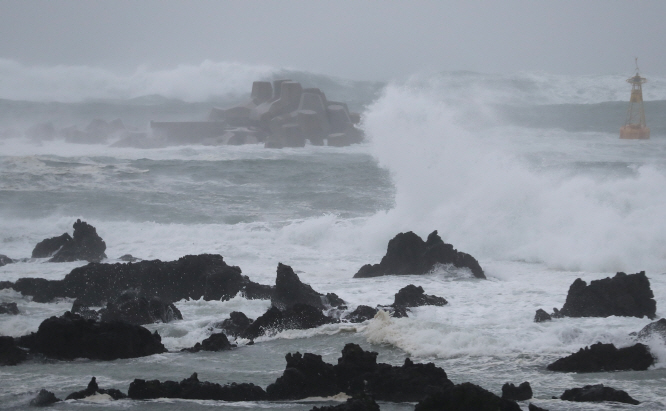Boston, Sept. 15 (Korea Bizwire) — Catastrophe risk modeling firm AIR Worldwide estimates that industry insured losses from Typhoon Faxai, which made landfall in Japan on September 9, will be between JPY 340 billion (USD 3 billion) and JPY 740 billion (USD 7 billion). AIR Worldwide is a Verisk (Nasdaq:VRSK) business.
According to AIR, Typhoon Faxai made landfall in Yokosuka, a southern suburb of Tokyo, on the main island of Honshu at around 3:00 a.m. local time Monday, September 9, with 1-minute sustained wind speeds of 170km/h (105 mph). Faxai crossed Tokyo Bay to strike Tokyo City with winds still equivalent to a strong Category 2 hurricane.
Faxai brought damaging winds across southeastern Honshu, along with storm surge and heavy precipitation to coastal regions. Impacts were reported across Chiba, Kanagawa, and Shizuoka prefectures. Storm surge was highest along the eastern shores of Tokyo Bay: JMA recorded a storm surge of more than 1 meter in Mera, Chiba Prefecture. The city of Izu in Shizuoka Prefecture experienced 17 inches of rain in 24 hours through early Monday, with recorded rates of more than four inches per hour.
According to AIR, Typhoon Faxai surpassed Typhoon Higos for the strongest sustained wind speed at landfall in the region and tied with 1958′s Typhoon Helen for the lowest recorded central pressure. Faxai was comparable in strength to Typhoon Jebi, which devastated the southern Shikoku Island in 2018.
High winds downed two electrical towers and multiple utility poles, leaving more than 900,000 without power in the prefectures of Chiba, Ibaraki, Kanagawa, Shizuoka, and Tokyo.
Faxai also impacted crops in the region, ravaging rice fields and fruit farms just before harvest time.
AIR’s modeled insured loss estimates include:
- Insured damage to property (residential, commercial, industrial, and agricultural/mutual), both structures and their contents, and automobile from wind and storm surge
AIR’s modeled insured loss estimates do not include:
- Losses from precipitation-induced flood
- Landslide
- Losses to land
- Losses to infrastructure
- Losses to CAR/EAR, marine hull, or marine cargo lines of business
- Business interruption losses
- Loss adjustment expenses
- Demand surge—the increase in costs of materials, services, and labor due to increased demand following a catastrophic event; demand surge can be applied by AIR software users who want to account for this variable
About AIR Worldwide
AIR Worldwide (AIR) provides risk modeling solutions that make individuals, businesses, and society more resilient to extreme events. In 1987, AIR Worldwide founded the catastrophe modeling industry and today models the risk from natural catastrophes, terrorism, pandemics, casualty catastrophes, and cyber incidents. Insurance, reinsurance, financial, corporate, and government clients rely on AIR’s advanced science, software, and consulting services for catastrophe risk management, insurance-linked securities, longevity modeling, site-specific engineering analyses, and agricultural risk management. AIR Worldwide, a Verisk (Nasdaq:VRSK) business, is headquartered in Boston, with additional offices in North America, Europe, and Asia. For more information, please visit www.air-worldwide.com.
###
For more information, contact:
Kevin Long
AIR Worldwide
+1-617-267-6645
klong@air-worldwide.com
Source: AIR Worldwide via GLOBE NEWSWIRE








